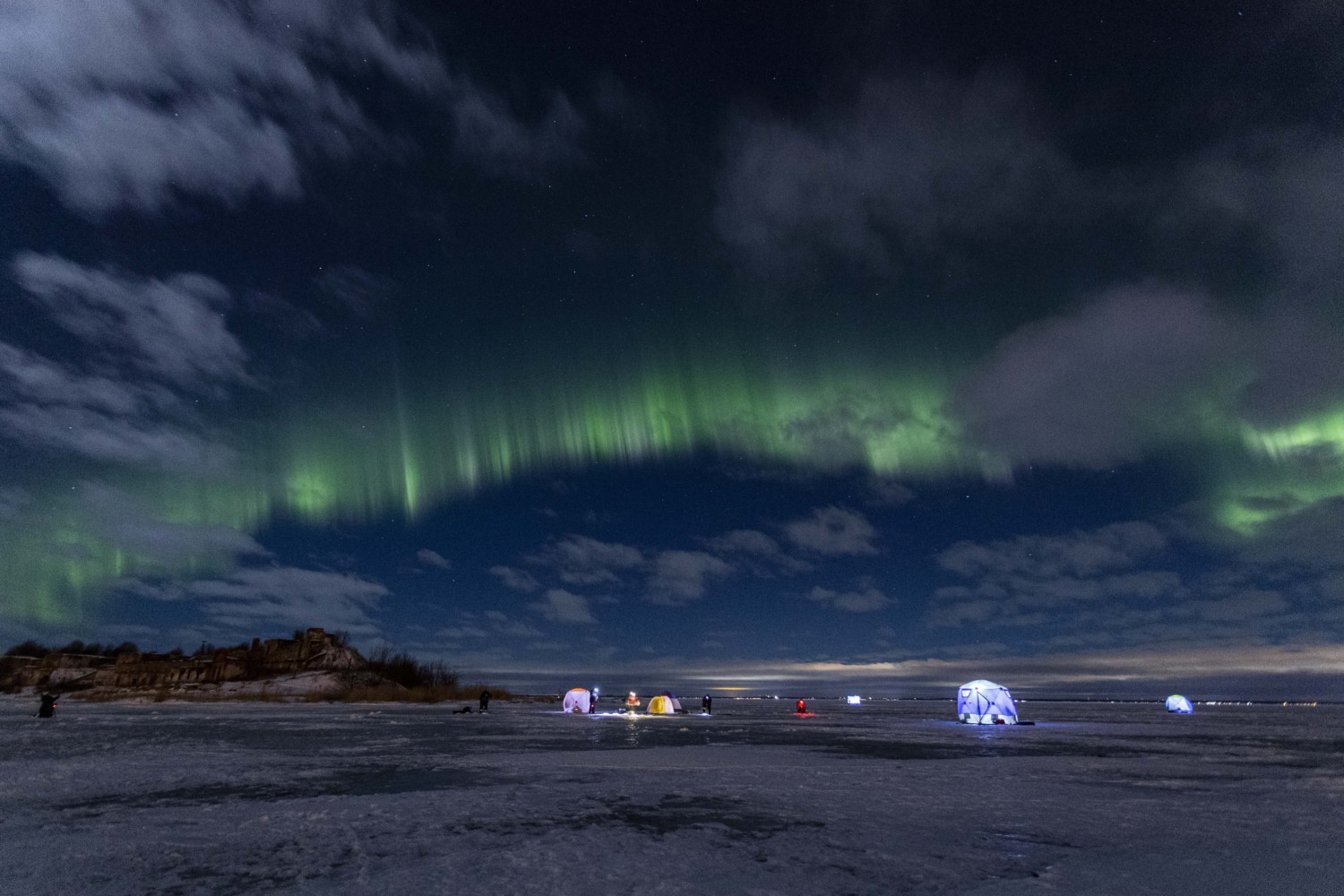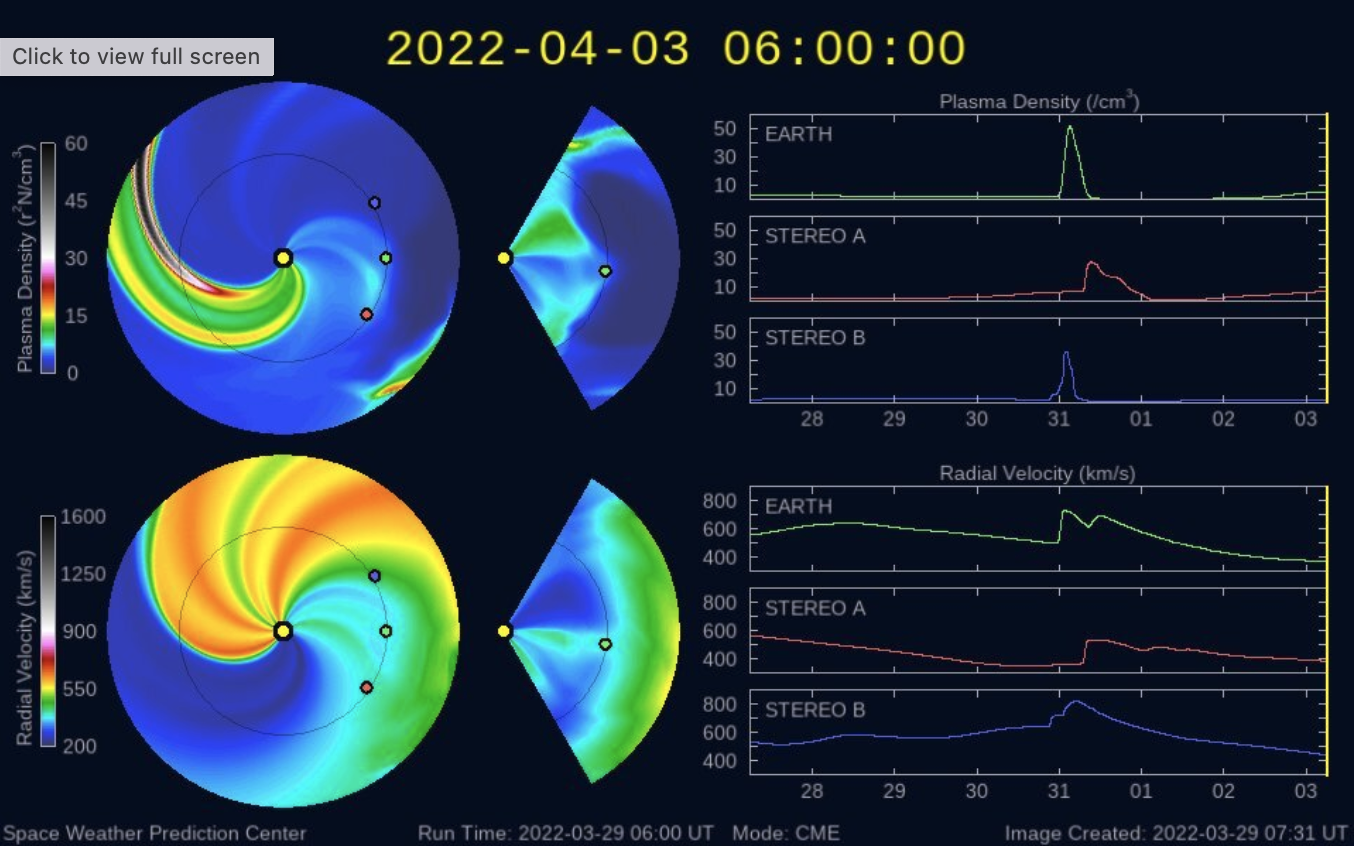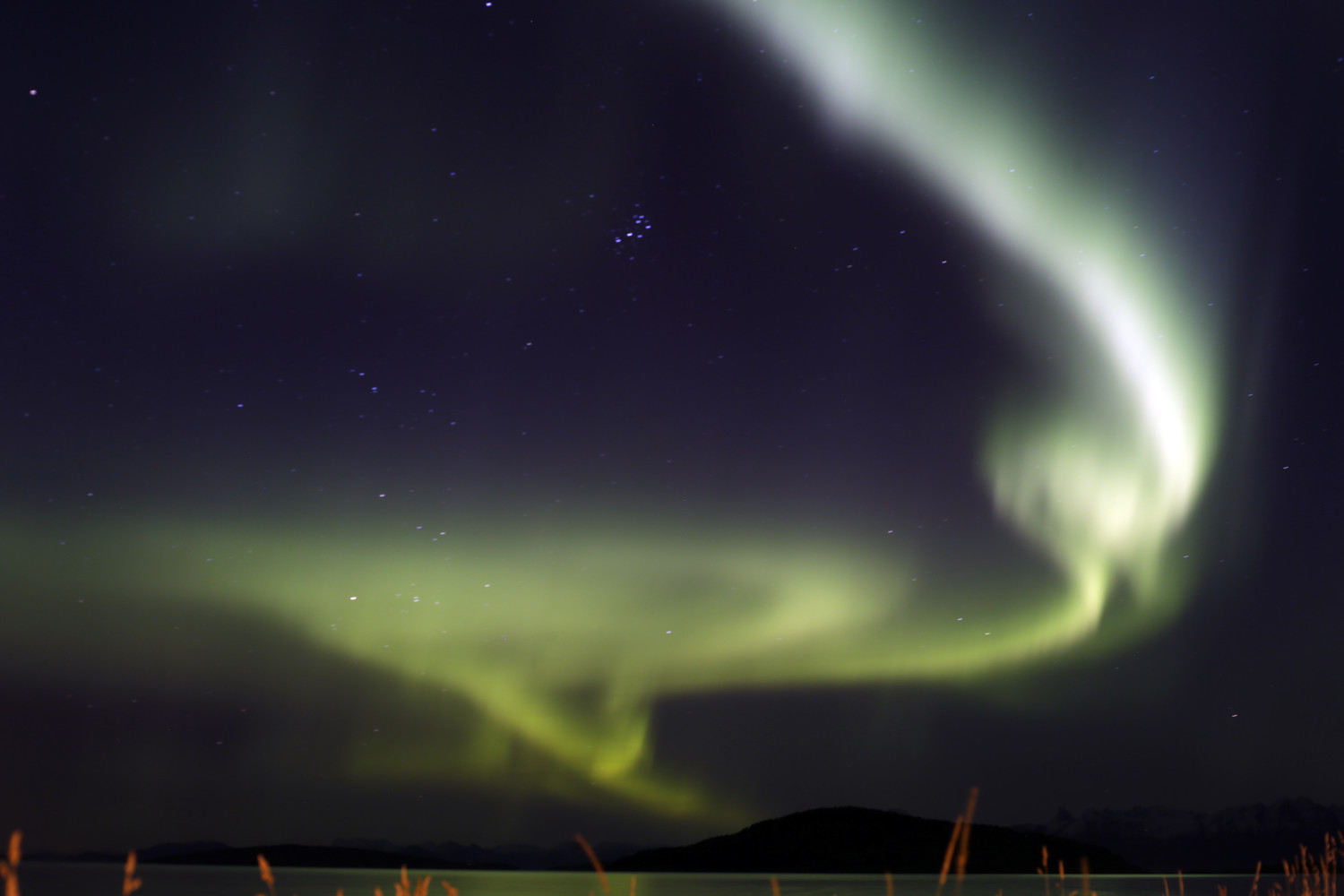Look up in the night sky tonight and you just might catch a glimpse of something spectacular: the Aurora Borealis!
Also known as the Northern Lights, the Aurora Borealis may make an appearance in the northern part of the U.S. starting late on Wednesday, March 30, and into the early hours of Thursday, March 31.
Typically, the Aurora Borealis is only seen in the northernmost regions of the planet, including Canada, Iceland and Norway. In the U.S., Alaska is basically the only state where you can regularly get a view of it.

However, thanks to some major activity going on with the sun, the lights may stretch far enough that many Americans in the continental U.S. will be able to see the Northern Lights with the naked eye.
Word first got out about the potential for an Aurora Borealis sighting on March 28 after a tweet from the National Oceanic and Atmospheric Administration’s Space Weather Prediction Center.
3-Day Forecast Issued 2022 Mar 29 0030 UTC:
The greatest expected 3 hr Kp for Mar 29-Mar 31 2022 is 6 (NOAA Scale G2).
S1 or greater: 99%, 15%, 15%. R1-R2: 35%, 30%, 30%.
R3 or greater: 10%, 5%, 5%. https://t.co/gPw8AeBd9u— NOAA Space Weather (@NWSSWPC) March 29, 2022
So, that’s not exactly the snappiest tweet ever posted. Don’t worry! We’re going to translate all those letters and numbers for you.
What Is Causing This Augmented Aurora Borealis Tonight?
On March 28, the sun released a Coronal Mass Ejection or CME, which is a large mass of plasma and magnetic fields from the sun‘s corona, according to NOAA. These CMEs happen often and cause geomagnetic storms which often occur without us noticing.
When these storms hit the area of the atmosphere called the ionosphere (which contains electrical fields that cause the lights of Aurora Borealis), conditions can change enough to affect the strength and reach of the Northern Lights. That’s what’s happening tonight. Basically, the power of the Northern Lights is being cranked up for a night.

In a YouTube video shared by the National Weather Service branch in Riverton, Wyoming, the reaction between this CME and the ionosphere warranted a strong geomagnetic storm watch.
The storm could push the Aurora Borealis closer to the equator than usual, making it visible to people in northern states including Idaho, Maine, Michigan, Minnesota, Montana, New Hampshire, New York, North Dakota, Washington, Wisconsin and Vermont. Check out the NWS clip below for more details.
When And How To See The Northern Lights
The best time to go out and look for the Aurora Borealis starts at 10 p.m. Eastern on March 30 and runs through 1 a.m. on March 31.
For the best views of the Northern Lights, you will want to go somewhere with dark conditions, away from the light pollution of populated areas. Then, face the northern horizon (use a compass app on your phone to easily orient yourself) and look for a green band of light that may look like it’s flickering or dancing like fire.

Watch A Livestream Of The Northern Lights
If you don’t happen to live in any of the areas where the Aurora Borealis might appear, don’t worry! Explore.org has a live camera on the skies of Manitoba, Canada, that runs 24 hours a day. Just visit the livestream’s website in the evening and you might have the best seat in the house to see the natural phenomenon, right from your own home!
This story originally appeared on Simplemost. Checkout Simplemost for additional stories.


